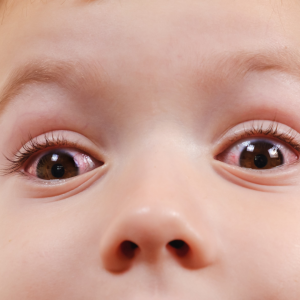Pink Eye: What to Know
 If your child complains of having “sand in my eyes” or wakes up with one or both eyes crusted shut, be prepared to cancel their normal schedule due to the contagious nature of pink eye.
If your child complains of having “sand in my eyes” or wakes up with one or both eyes crusted shut, be prepared to cancel their normal schedule due to the contagious nature of pink eye.
Pink eye is common in young kids and can be bacterial or viral. Either kind of infection can lead to breakouts that spread quickly in day-care settings, preschools and elementary schools. Coughing and sneezing are common transmission channels. Teenagers and adults are not immune either.
“Pink eye or conjunctivitis is when the conjunctiva or the white part of the eye and the inner eyelids become inflamed,” said Hasan Othman, MD, and a pediatrician with Memorial Care in Jacksonville. “While it is normally a minor infection, there can be discomfort due to swollen eyelids and a sensitivity to bright light.”
Generally, a pediatrician should examine a child when pink eye occurs. In-person or telehealth appointments can be scheduled through Memorial Care. Similar symptoms to pink eye can indicate a more serious eye condition especially if accompanied by changes in eyesight, serious pain or swelling around the eyes.
Antibiotic eye drops or ointment are generally prescribed for bacterial infections. Once an antibiotic treatment is given for a 24-hour time period, the child should not be contagious.
“Young children may wake up with their eyes ‘crusted’ shut by the dried discharge and be frightened about what’s happening,” said Othman. “To ease discomfort, try using cool or warm washcloths on the eyes. Use gauze or cotton balls to clean the eye area and remove any eye discharge. Be sure to launder in hot water or throw away anything that touches the eyes to avoid spreading the infection to others.”
Need a healthcare provider? Visit Memorial Care to view providers in our 16-county area who are accepting new patients.
Related Resources
When to Schedule a Telehealth Appointment
RSV in Young Children: When to Seek Help